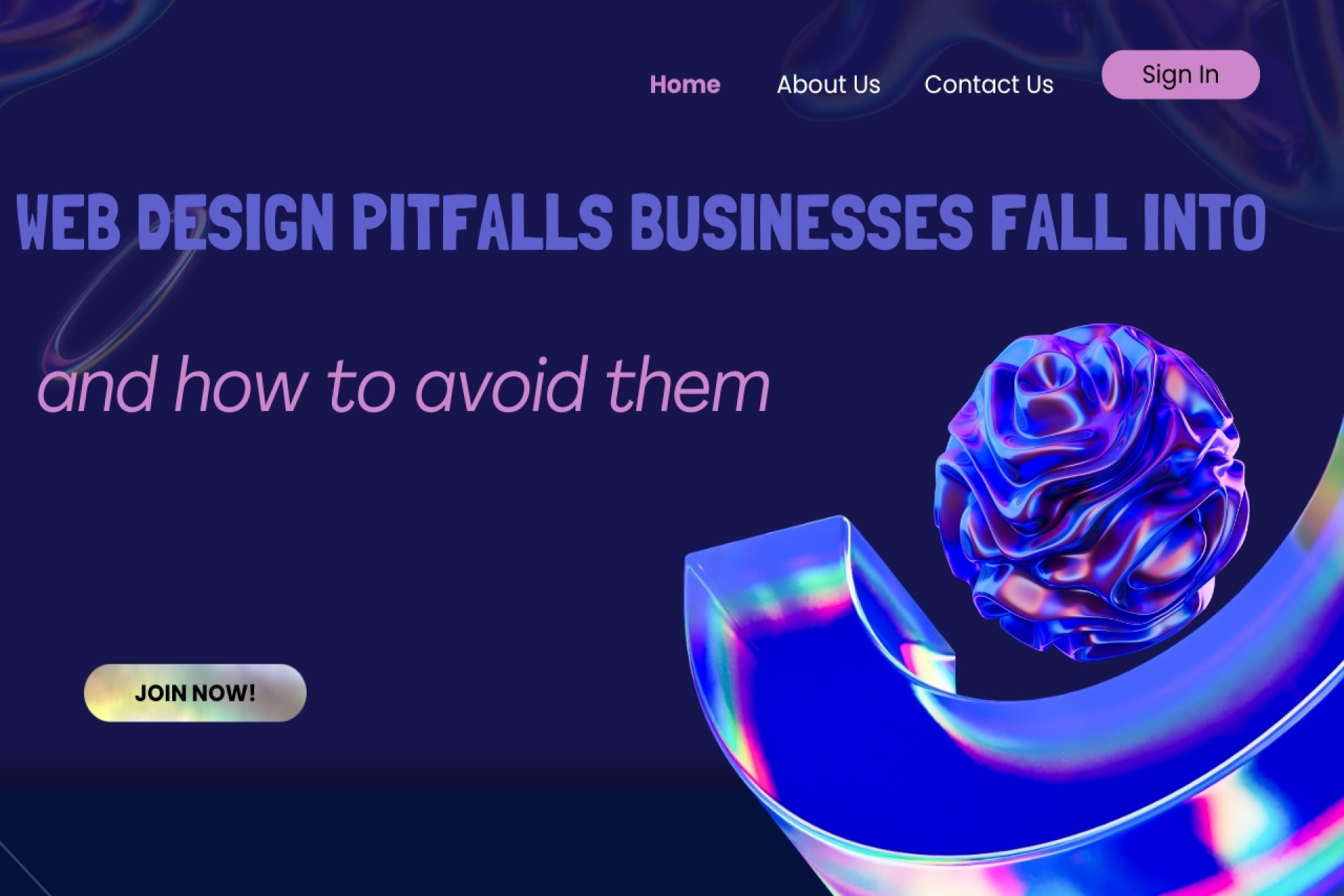
Web Design Pitfalls Businesses Often Fall into and How to Avoid Them
Your business website is often times the first impression you make with potential customers and clients. It’s important that it not just look great, but it work great too. Let's navigate through common pitfalls when crafting a website and explore how to sidestep them.
1.Template Troubles:
Choosing a website template can be a pitfall if you're drawn to its appearance without considering how well it aligns with your content. Templates often look perfect with demo content but may not suit your unique material. They are optimized for specific content types, and not every template fits all. It's crucial to let your content dictate the design, ensuring it resonates with your target audience. Don't fall into the trap of selecting a template based solely on its appearance; instead, tailor your website to effectively showcase your content and appeal to your audience.
2. Unfitting Features:
Creating a website goes beyond aesthetics; it needs to align with both your identity and your audience's preferences. An error many commit is incorporating features without considering their audience. Your website, although reflective of you, primarily serves your audience. Injecting fun is encouraged, but it should harmonize with your visitors' expectations. Personalizing the site is excellent, but it must resonate with your users. Therefore, prior to implementing any feature, carefully evaluate your audience's needs and inclinations to ensure a seamless and engaging online experience.
3. SEO Oversight:
Overlooking SEO can negatively impact your website's visibility. Essential components like headings, content, and site speed play a critical role in how search engines perceive your site. Headings provide a structured hierarchy for better understanding, and engaging content is vital for visibility. It's imperative to ensure that your design doesn't compromise these fundamental SEO elements. By incorporating these aspects seamlessly into your website, you enhance its visibility and overall performance on search engines. Don't let your design choices hinder the essential components that contribute to a strong online presence.
4. Inconsistent Look:
Maintaining a consistent look on your website is key to a positive user experience. When different sections have varied designs, it can confuse visitors and undermine your brand's professionalism. Cohesiveness in design, color scheme, typography, and layout is crucial for creating a seamless and enjoyable browsing experience. Consistency is not just about maintaining a professional brand image; it also ensures that users can navigate your site easily and understand your content. In summary, an inconsistent look can lead to confusion and a lack of trust among visitors, highlighting the importance of a unified design across all sections of your website for both user-experience and brand credibility.
5. Missing Call to Action (CTA):
Neglecting a clear Call to Action (CTA) on your website can be detrimental to its effectiveness. A CTA serves as a guide for users, directing them toward specific actions like making a purchase, signing up for a newsletter, or contacting your business. Its absence leaves visitors uncertain about the next steps, hindering engagement and conversions. A strategically placed and well-crafted CTA not only guides users but also enhances the chances of achieving your website's goals. It is an indispensable element for effective design and communication, ensuring a seamless and purposeful user experience. Whether you're aiming for sales, subscriptions, or inquiries, incorporating a clear and inviting CTA is key to optimizing your website's impact on visitors.
6. Content Overload:
When it comes to web design, avoiding content overload is crucial. Overwhelming a webpage with excessive information can have negative consequences. It not only makes it challenging for visitors to find the information they need but also creates a cluttered appearance that can harm the overall user experience. Furthermore, this content overload can adversely impact search engine optimization (SEO), making it difficult for the website to rank well in search results. To maintain a positive user experience and enhance SEO, it's essential to strike a balance with the amount of content on each page. Ensuring that information is organized and easily accessible will contribute to a user-friendly design. By finding this equilibrium, businesses can create websites that are both informative and visually appealing, catering to the needs of visitors while optimizing their online presence.
In conclusion, a successful website strikes a delicate balance between aesthetics, user experience, and SEO. While visual appeal is crucial, it should never overshadow the importance of creating a site that users love and that search engines can easily navigate. Prioritizing user-friendly design and optimizing for search engines ensures your website is both attractive and functional. This harmony leaves a positive and lasting impression on potential clients, fostering engagement and trust. Remember, the key is to create a website that not only pleases your taste but also resonates with your audience and performs well in the digital landscape.






(0) Comment